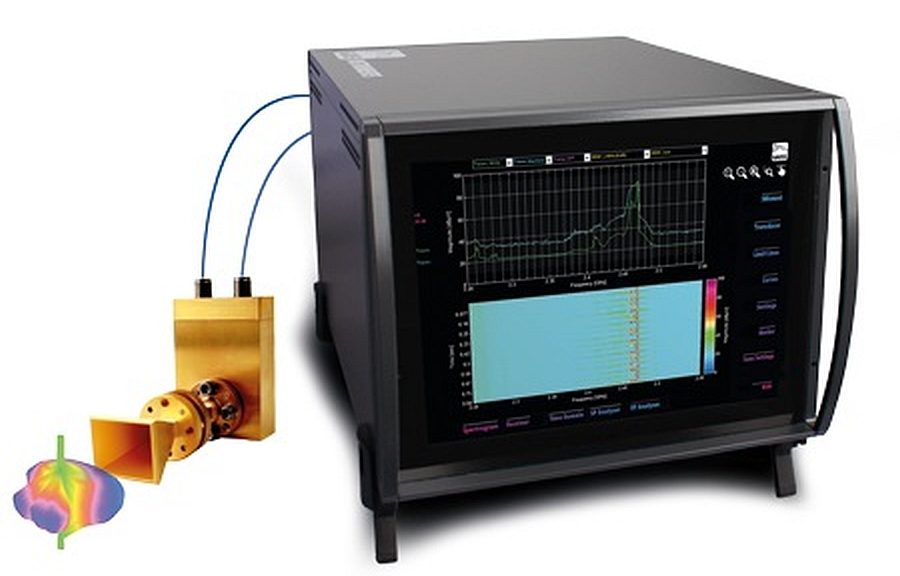- The TDEMI Ultra test system from Gauss Instruments covers the frequency range from DC to 40 GHz. Using external mixers, the frequency band can now be extended to the Terahertz range.
- This instrument family includes several models with different frequency bands: from 9 kHz up to 6 GHz, 18 GHz, 26.5 GHz or 40 GHz.
- The frequency band can be upgraded later and progressively up to 40 GHz and can be started at DC with the DC-UG option.
- Combined with the EMI64k software, the TDEMI Ultra test system performs real-time electromagnetic interference (EMI) measurements in the frequency ranges used by 5G standard radio and mobile phone applications.
The FFT and superheterodyne receiver displays a dynamic range of approximately 100 dB (attenuation @0dB and preset disabled) or even up to more than 170 dB including the automatic attenuator.
The TDEMI Ultra, which incorporates a real-time spectrum analyzer, has a real-time bandwidth of 685 MHz allowing the display of a gapless spectrogram with a Probability of Intercept (POI) of 300 ps. In addition, it allows IQ data evaluation and digital signal demodulation.
This instrument makes it possible to test 5G signals in accordance with FCC standards. The EMI64k software suite automates the tests and provides additional signal evaluation tools and capabilities. Measurement results can be characterized, documented and evaluated with this software suite. In particular, it is possible to display the radiation angle, height and polarization for each frequency point.
The real-time scan function allows a measurement to be performed, displayed and recorded in spectrogram mode over a range of several gigahertz in real time. With external mixers, the real-time sweep, recording and display capabilities allow the THz frequency band to be reached, exceeding current 5G test requirements.
TDEMI Ultra measurement systems can be remotely controlled and fully automated via Ethernet (TCP/IP) or any other standard interface.






